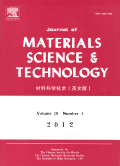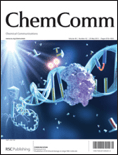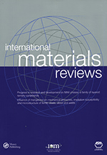
Materials Research Express
Scope & Guideline
Connecting global researchers in materials innovation.
Introduction
Aims and Scopes
- Materials Characterization:
The journal publishes studies that involve the detailed characterization of materials using various techniques, such as spectroscopy, microscopy, and mechanical testing, to understand their properties and behaviors. - Synthesis and Processing of Materials:
Research articles often focus on novel synthesis methods, including green chemistry approaches, and the processing of materials to enhance their performance, such as additive manufacturing and surface modification. - Nanomaterials and Nanocomposites:
There is a significant emphasis on the development and application of nanomaterials, including their synthesis, properties, and potential applications in various fields such as electronics, catalysis, and medicine. - Sustainable Materials and Green Chemistry:
The journal highlights research on sustainable materials and methods, including the recycling of materials, and the development of biodegradable composites as part of a broader commitment to environmental sustainability. - Functional and Smart Materials:
Papers discussing the design and application of functional materials, including thermoelectric, piezoelectric, and magnetic materials, are common, showcasing their potential for use in advanced technology applications. - Computational Materials Science:
The journal also features studies that employ computational models to predict material behavior, properties, and performance, integrating theoretical approaches with experimental findings.
Trending and Emerging
- Biomaterials and Biocompatibility:
There is a growing trend towards research on biomaterials, particularly those that are biocompatible and can be used in medical applications, such as drug delivery systems and tissue engineering. - Energy Materials:
Research on materials for energy applications, including batteries, fuel cells, and solar cells, has gained prominence, driven by the global push for sustainable and renewable energy solutions. - Nanotechnology and Nanocomposites:
The focus on nanotechnology continues to expand, with increased research on nanocomposites that leverage the unique properties of nanomaterials for enhanced performance in various applications. - Smart and Functional Materials:
Emerging themes include the development of smart materials that respond dynamically to their environment, including shape-memory alloys and stimuli-responsive polymers. - Machine Learning in Materials Science:
The integration of machine learning and artificial intelligence in materials research is on the rise, with studies focusing on predictive modeling and optimization of material properties. - Environmental Sustainability and Recycling:
Research emphasizing sustainable practices, such as recycling and waste valorization in materials development, is increasingly prevalent, aligning with global sustainability goals.
Declining or Waning
- Traditional Metal Alloys:
Research solely focused on traditional metal alloys without innovative modifications or applications has decreased, as the field has shifted towards more advanced materials and composites with specific functionalities. - Basic Material Studies without Application:
There is a waning interest in purely fundamental studies of materials that do not lead to practical applications or advancements in technology, as researchers increasingly seek to connect their work to real-world implications. - Conventional Chemical Synthesis Methods:
Studies utilizing conventional chemical synthesis methods without any novel approaches or enhancements have diminished, as there is a growing emphasis on green chemistry and sustainable practices. - Low-Priority Applications of Materials:
Research focusing on low-impact applications of materials, particularly in industries that are not aligned with current technological trends (e.g., low-tech consumer goods), appears to be declining.
Similar Journals

BULLETIN OF MATERIALS SCIENCE
Pioneering Research in the Heart of Materials ScienceBulletin of Materials Science, published by the Indian Academy of Sciences, is a distinguished journal that has been contributing to the field of materials science since its inception in 1979. With an ISSN of 0250-4707 and E-ISSN 0973-7669, it provides a platform for researchers to share groundbreaking studies and advancements in the mechanics of materials and general materials science. As of 2023, the journal holds a respectable Q3 ranking in both the Materials Science (miscellaneous) and Mechanics of Materials categories, highlighting its competitive position in the academic landscape. Although the journal currently does not operate under an open access model, it remains a vital resource for professionals and students keen on exploring innovative material developments and methodologies. With a commitment to promoting high-quality research, the Bulletin of Materials Science features rigorous peer-review processes, making it an essential reference for anyone engaged in the materials science domain.

Journal of Materials Science & Technology
Transforming Ideas into Advanced Material SolutionsThe Journal of Materials Science & Technology, published by JOURNAL MATER SCI TECHNOL in China, is a leading forum for the latest research in the multidisciplinary field of materials science. With the ISSN 1005-0302 and E-ISSN 1941-1162, this esteemed journal boasts an impressive impact factor and has established itself as a vital resource for professionals, researchers, and students alike. Covering a wide range of topics, including ceramics, composites, materials chemistry, mechanical engineering, and polymers, it has achieved a coveted Q1 ranking in multiple categories as of 2023, reflecting its position in the top tier of scholarly publications. Notably, the journal excels in its Scopus ranks, placing within the top 5% in categories such as Metals and Alloys and Mechanical Engineering. Aiming to foster knowledge and innovation in material development and application, the journal is committed to facilitating groundbreaking research and collaborations that propel the field forward. With its convergence of insights from 1993 to 2025, the Journal of Materials Science & Technology remains an indispensable resource for the advancement of materials science.

Accounts of Materials Research
Catalyzing interdisciplinary collaboration in materials research.Accounts of Materials Research is a premier journal published by the American Chemical Society, focusing on the multidimensional field of materials science. With a robust impact factor and a commitment to open-access research, it serves as a vital platform for leading-edge discoveries from 2020 to 2024. The journal has rapidly ascended to the top quartile in multiple categories, including Chemical Engineering, Materials Chemistry, and Polymers and Plastics, demonstrating its significant influence within the academic community. Recognized by Scopus as a key resource—with remarkable rankings that place it in the 95th percentile of its field—Accounts of Materials Research is devoted to publishing high-quality, innovative research that addresses critical challenges in materials development and implementation. This journal is essential for researchers, professionals, and students seeking to stay informed about the latest advancements and collaborative opportunities within the interdisciplinary landscape of materials science.

ACS Materials Letters
Advancing the Frontiers of Materials Science and EngineeringACS Materials Letters is an esteemed peer-reviewed journal published by the American Chemical Society, emphasizing groundbreaking research and advancements in the fields of materials science, biomedical engineering, and chemical engineering. With a robust update and established reputation since its inception in 2019, this journal has rapidly ascended to the top tiers, achieving Q1 rankings in key categories such as Biomedical Engineering, Chemical Engineering (miscellaneous), and Materials Science (miscellaneous) in 2023. The journal boasts impressive Scopus rankings, including #14 in General Chemical Engineering and #19 in Biomedical Engineering, placing it among the elite publications in these domains. While not fully open access, ACS Materials Letters facilitates the dissemination of high-impact research accessible to academics and industry professionals alike. With its comprehensive scope and rigorous selection process, the journal serves as a vital resource for researchers and students eager to stay abreast of the latest innovations and technologies shaping materials science and engineering.

JOURNAL OF ELECTRONIC MATERIALS
Pioneering Discoveries in Electronic, Optical, and Magnetic MaterialsWelcome to the Journal of Electronic Materials, a premier publication in the field of materials science. Published by Springer, this esteemed journal has been a beacon for groundbreaking research in electronic, optical, and magnetic materials since its inception in 1972. As an established resource, it boasts a commendable impact factor and categorically ranks in the second quartile (Q2) in key areas such as Condensed Matter Physics and Electrical and Electronic Engineering, as well as holding a respectable third quartile ranking in fields related to Electronic, Optical, and Magnetic Materials and Materials Chemistry. Researchers, professionals, and students can access a wealth of knowledge as we publish original articles, reviews, and cutting-edge research that push the boundaries of science and technology in these critical fields. Stay informed and engaged as we explore advancements that shape the future of electronic materials.

CHEMICAL COMMUNICATIONS
Advancing the frontiers of chemical knowledge.Chemical Communications, published by the esteemed Royal Society of Chemistry, is a prominent journal within the field of chemical science, focusing on the dissemination of cutting-edge research in a variety of sub-disciplines including catalysis, materials chemistry, and electronic materials. Operating without an open access model, this journal provides critical insights from contributors around the globe, enhancing our understanding of complex chemical interactions and innovative applications. Ranked in the top quartile for several categories such as Ceramics and Composites, and Metals and Alloys, Chemical Communications boasts impressive Scopus rankings, securing strong positions across multiple fields and showcasing its influence within the scientific community. The journal is committed to advancing knowledge and fostering collaboration among researchers, professionals, and students, making it an invaluable resource for those looking to stay abreast of the latest advancements in chemistry and materials science. With a publication history dating back to 1965 and continuing into 2024, its rich archive serves as a vital repository of chemical research and development.

ADVANCED ENGINEERING MATERIALS
Fostering Dialogue Between Academia and IndustryADVANCED ENGINEERING MATERIALS is a leading journal dedicated to the field of materials science, particularly within the realm of condensed matter physics. Published by WILEY-V C H VERLAG GMBH in Germany, this esteemed journal has been a crucial platform for disseminating cutting-edge research since its inception in 1999. With an impressive impact factor and ranked in the top quartiles of its categories, it boasts a Q1 ranking in Condensed Matter Physics and a Q2 rank in related materials science fields as of 2023. ADVANCED ENGINEERING MATERIALS serves a diverse readership, including researchers, industry professionals, and students, striving to advance the understanding and application of innovative materials. Frequent contributions to this journal help bridge theoretical advancements with practical applications, fostering a vibrant academic and industrial dialogue. Although currently not an open-access journal, the insights shared within its pages are pivotal for anyone engaged in the dynamic sectors of engineering and material sciences.

INTERNATIONAL MATERIALS REVIEWS
Elevating Standards in Materials ResearchINTERNATIONAL MATERIALS REVIEWS, published by SAGE Publications Inc, is a leading journal dedicated to the comprehensive analysis of contemporary research in the fields of materials chemistry, mechanical engineering, mechanics of materials, and the study of metals and alloys. With an impressive impact factor and a Q1 ranking across multiple categories such as Materials Chemistry and Mechanical Engineering in 2023, it ranks amongst the top journals for innovative materials research. The journal has a long-standing history since its inception in 1987 and continues to serve as a crucial resource for academics and professionals alike. Although it is not open access, it is renowned for its rigorous peer-review process and its commitment to disseminating high-quality materials science research globally. Researchers, students, and industry professionals benefit greatly from the journal's insightful reviews, both for the advancement of theoretical knowledge and practical applications within the fast-evolving materials field.

ADVANCED MATERIALS
Elevating Research in Materials EngineeringAdvanced Materials, published by Wiley-VCH Verlag GmbH, is a premier academic journal that serves as a crucial platform for cutting-edge research in the field of materials science and engineering. With an impressive impact factor and ranking among the top tiers in various categories, including Materials Science, Mechanical Engineering, and Nanoscience, this journal is recognized for its high-quality contributions and relevance to contemporary research challenges. Spanning from 1989 to 2024, Advanced Materials not only features groundbreaking studies but also provides insights into innovative applications and advancements in material design and engineering. Researchers, professionals, and students alike will benefit from the rigorous peer-review process and diverse range of topics covered, making it an indispensable resource for those aiming to stay at the forefront of materials science innovation.

MATERIALE PLASTICE
Innovative Insights into Materials and EngineeringMATERIALE PLASTICE is a distinguished academic journal published by REVISTA CHIMIE SRL in Romania, focusing on the fields of Chemistry, Materials Science, and Engineering. With an ISSN of 0025-5289 and an E-ISSN of 2668-8220, this journal has a historical commitment to advancing the study of polymers and plastics since its inception in the early 1970s. Although classified in the Q4 category across multiple disciplines including miscellaneous chemistry and materials chemistry as of 2023, it serves as an important forum for researchers and professionals dedicated to innovative materials research and development. The journal’s resources, though not openly accessible, are pivotal for scholars seeking to deepen their knowledge in the mechanics of materials and interdisciplinary applications. MATERIALE PLASTICE is not only a repository of significant research findings but also a platform for fostering collaboration and discussion among a global audience that continues to strive for scientific excellence in polymer and materials studies.